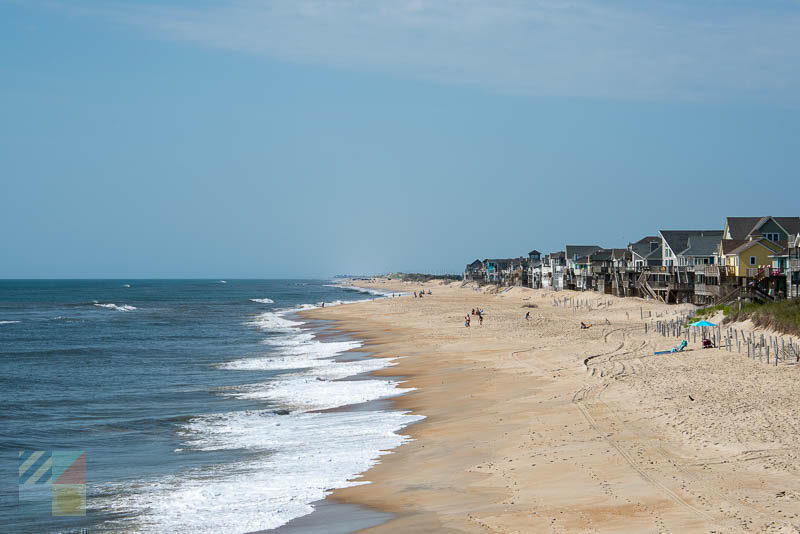
Maybe you are a surfer or kiteboarder who wants to get away from the crowds. For example, maybe there is a great fishing spot you can’t get to easily on foot. If you are local to the area and visit Cape Hatteras National Seashore all the time, that’s another story, and even then you need to have a good reason to do so. I see no reason at all for the typical beach-going vacationer to go through the trouble of getting a permit and equipment to drive on the beach.

However, I wouldn’t let the thought of a towing bill scare you away, for just about any vehicle that gets stuck can get unstuck with a little help and the right equipment, which you should be carrying in your vehicle. The sand near the shore is usually hard packed it’s the sandy road leads from the paved area to the beach that is often soft and deep. During my visit I saw dozens and dozens of pick-ups and SUVs driving along the beach without any problem, but I also saw one that got stuck just going up the off-road access ramp. The undercarriage of your vehicle will be coated with salt that if not removed can cause rust damage, your vehicle will get sand in it, and you run the risk getting stuck. If you would like to do so just because it looks like fun, you need to reassess your vacation plans. Regardless of your vehicle, you really need to contemplate the reasons for driving on the beach.

In fact, try not to stop at all on the soft sand.

This will cause the wheels to dig into the sand. If you are in soft sand, don’t slam on your brakes.Be sure to bring a tire pressure gauge with you, and get to a gas station with air as soon as possible after leaving the park. It is recommended to lower your tire pressure to 20 psi.However, my worries were all for naught, for with a 4-Wheel Drive vehicle and some common sense you can pretty much make your way through any type of sand.īased on my two days of beach driving, here are a few tips: I had done quite a lot of “4-Wheelin’” on rocky roads, but prior to this the only beach I had driven on was Daytona Beach in Florida, and that’s as hard as pavement. I did not drive on the beach at Cape Hatteras National Seashore, but I drove just about every foot of beach at North and South Core Banks at Cape Lookout National Seashore. At first I was very apprehensive due to the possibility of getting stuck. Camping trailers are not allowed, nor are ATVs, UTVs, and motorcycles. You can also tow a boat or utility trailer as long as the trailer has no more than two axles. Having beach drove many years in Coralla and Hatteras (and kayak camped on the Core Banks) I have to say then yes, most AWDs should not attempt (friend with a Honda got stuck in Coralla’s 4wd area), but no, not the case with Subaru Foresters- in fact one (you can’t choose your relatives) flew by me in my F150 once in reverse showing off! Think it’s about ground clearance, most AWD’s don’t have enough but a few do. Great article! But one comment-your advise for vehicles not to attempt with AWD, well yes and no. From a recent National Park Planner visitor: However, I have received a few emails from people who argue that All-Wheel-Drive vehicles will suffice, but they do suggest the vehicles be high-clearance.
/do0bihdskp9dy.cloudfront.net/06-19-2023/t_70d186541c7b4fb9a6f64e5060eaa6d7_name_file_1280x720_2000_v3_1_.jpg)
However, fee-based permits are required along with a vehicle that is capable of driving in deep, soft sand and a set of basic rescue-oriented equipment: low-pressure tire gauge, shovel, jack and jack support board, full-sized spare tire, first-aid kit, fire extinguisher, trash bag or container, flashlight (if night driving), and tow strap. While any street-legal vehicle with two axles is allowed off road if you think you can make it through the sand, I recommend nothing less than a high-clearance 4-Wheel Drive vehicle. Driving on the beach is known as Off Road Drivingĭriving on the beach, or “off road,” is allowed at Cape Hatteras National Seashore, both along the Atlantic Ocean and the Pamlico Sound.


 0 kommentar(er)
0 kommentar(er)
